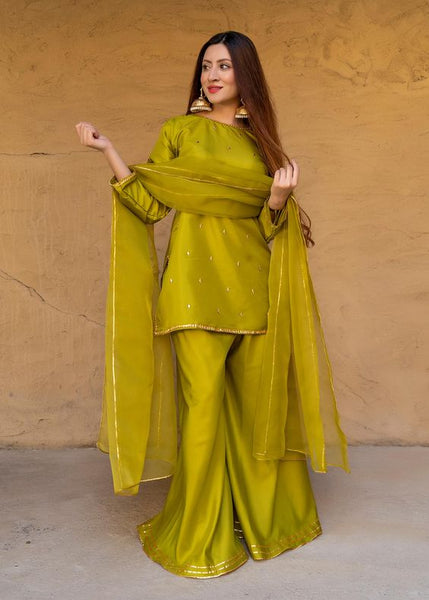Brief overview of raw silk fabric
Raw silk fabric originated in China over 5,000 years ago and continues to hold cultural importance in Asian societies. Raw silk is made directly from silk produced by cultivated silkworms and retains the fine, smooth texture of the delicate filaments. Often used for light fabrics like chiffon and charmeuse, raw silk fabric has a soft lustre and graceful drape that creates a sense of luxury. Beyond its tactile beauty, the enticing beauty about raw silk fabric is that it carries a deep cultural heritage.
Early Beginnings of Sericulture
The practice of sericulture, or silk production, began over 5,000 years ago in China. According to legend, it started when a Chinese Empress was sitting under a mulberry tree. A cocoon fell into her tea. As she tried to remove it, she noticed how the cocoon unravelled into a smooth, lustrous thread, which she learned could be woven into cloth. Thus began the process of cultivating silkworms. They feed on the mulberry trees and spin silk cocoons as part of their lifecycle.
The Chinese kept the silk production techniques a closely guarded secret for thousands of years as silk became an important export commodity along the Silk Road to the West. Sericulture would later spread to India, Korea, and Japan. The labour-intensive process of harvesting silk from cocoons and weaving it into luxurious fabrics made silk highly possession in the ancient china trade. Over time, sericulture developed into a major industry in Asia and across the world.

Silk in Ancient China
In ancient China, silk signified wealth and status. Only the Emperor, the high nobility and their families were permitted to wear the finest raw silk robes and garments. Bright silk colours like red and purple were reserved for the elite. Raw silk became ingrained in Chinese art, literature and culture as an object of luxury. The material was also integral to the growth of the Silk Road trade route, connecting China to commercial hubs as far as the Mediterranean and spreading silk's popularity across continents. Revered for its beauty and rarity, raw silk fabric continues to be a source of national pride and cultural identity in China today.
Silk Spreads to Other Civilisations
The prominence of silk expanded beyond China through trade routes like the Silk Road. Raw silk became prized across Asia, Africa and Europe. By the 1st century BCE, silk production through sericulture was established in South Asia. Ancient literature from India, Thailand and Cambodia describes royal silk attire as a mark of luxury. Silk gradually became popular beyond elites due to increasing trade.
Cultural Symbolism of Raw Silk
In numerous societies, raw silk carried symbolic meaning and importance. Across ancient Asian cultures, silk often represented social status, reserved for nobility due to rarity. Bright solid colours like imperial yellow were legally restricted to Chinese royalty - violations were punishable by death. In religions, silk signified purity and was used for offerings. Hindu and Buddhist texts recorded deities draped in sacred silk. Silk also had connotations of femininity, sensuality and refinement in Persia and Greece.
Decline and Revival of Silk Production
Silk production faced a decline with the collapse of overland trade routes. However, efforts to establish sericulture beyond Asia helped revive the industry. Silk heritage remains integral to identity in Asian countries like China, India, Thailand and Uzbekistan. Advances in textile technology have increased the accessibility and affordability of silk, integrating it into both traditional attire and modern fashion globally. Raw silk's tactile elegance and deep history continue to mesmerise people worldwide.

Frequently Asked Questions
1. Where did raw silk fabric originate?
Ans: Raw silk fabric originated over 5,000 years ago in ancient China. Archaeological evidence shows silk cultivation and production emerged during the Neolithic period around 6000 BCE.
2. Did silk production spread to other civilisations?
Ans: Yes, the silk trade allowed sericulture to spread beyond China to places like India, Thailand, Uzbekistan and more by the first century BCE. Silk became prized across Asia, Europe and Africa.
3. How did technological advancements contribute to sericulture?
Ans: Advances in textile production, like the silk reeling machine, helped increase silk fabric output and efficiency. New techniques expanded dyeing capabilities, accessibility, and affordability, expanding silk's reach.
4. How is silk production being revived in modern times?
Ans: Some countries are reinvesting in sericulture to revive silk heritage. Initiatives provide farmer training and resources to boost silk production, integrating traditional methods with modern technologies.
5. Is raw silk still culturally significant today?
Ans: Raw silk still holds cultural importance today in China, India, Uzbekistan, and other Asian countries. Silk remains intertwined with history, identity, and traditional attire, maintaining symbolic significance.
 Call Us
Call Us







